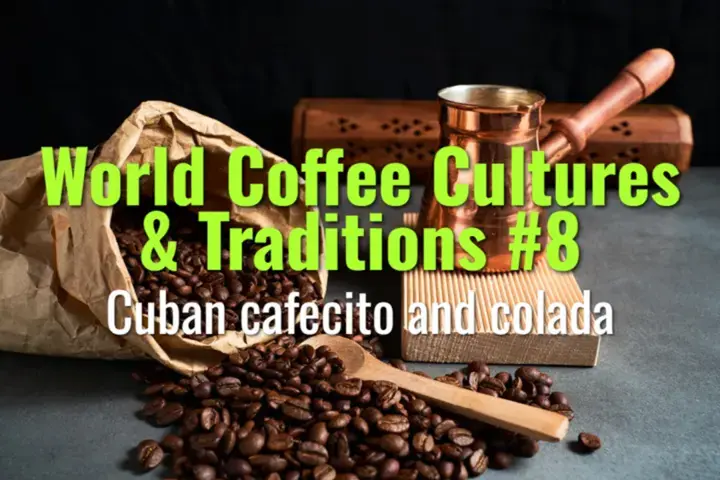Cuban cafecito and colada
The preparation, cultural role, and social traditions around Cuban cafecito and colada, iconic sweet espresso-based drinks in Cuban culture.
- Coffee Basics Nerds
- 2 min read
Article 8 of 12 in World Coffee Cultures & Traditions/

Cultural Context
- Coffee is central to Cuban daily life, despite challenges in supply.
- The cafecito (also called Cuban espresso) is a symbol of hospitality and resilience.
- The colada is its communal counterpart, designed for sharing in workplaces and gatherings.
Cafecito Preparation
- Made with finely ground dark-roasted coffee (often moka pot brewed in homes, espresso in cafés).
- Key step: Espuma (foam).
- Brew first drops of espresso.
- Whip vigorously with sugar until it forms a caramel-colored froth.
- Pour rest of espresso into espuma, creating a sweet, foamy crema.
- Served in small demitasse cups.
Colada Tradition
- A larger portion of cafecito, usually 4–6 shots brewed at once.
- Served in a large styrofoam cup with multiple small plastic demitasse cups.
- Shared among a group, common in Miami’s Cuban community.
- Symbolizes unity, conversation, and break-time bonding.
Sensory Profile
- Strong, intense coffee.
- Heavy sweetness from sugar (integral to the style).
- Thick, creamy espuma enhances texture.
Social Rituals
- Offering a cafecito is a gesture of friendship or welcome.
- The colada is almost always consumed standing in groups, reinforcing community spirit.
- Both drinks carry a rhythm of quick pauses in daily work and life.
Summary
The Cuban cafecito and colada transform strong coffee into a sweet, foamy, and social experience. The cafecito embodies personal hospitality, while the colada celebrates sharing and togetherness, making them pillars of Cuban coffee culture.